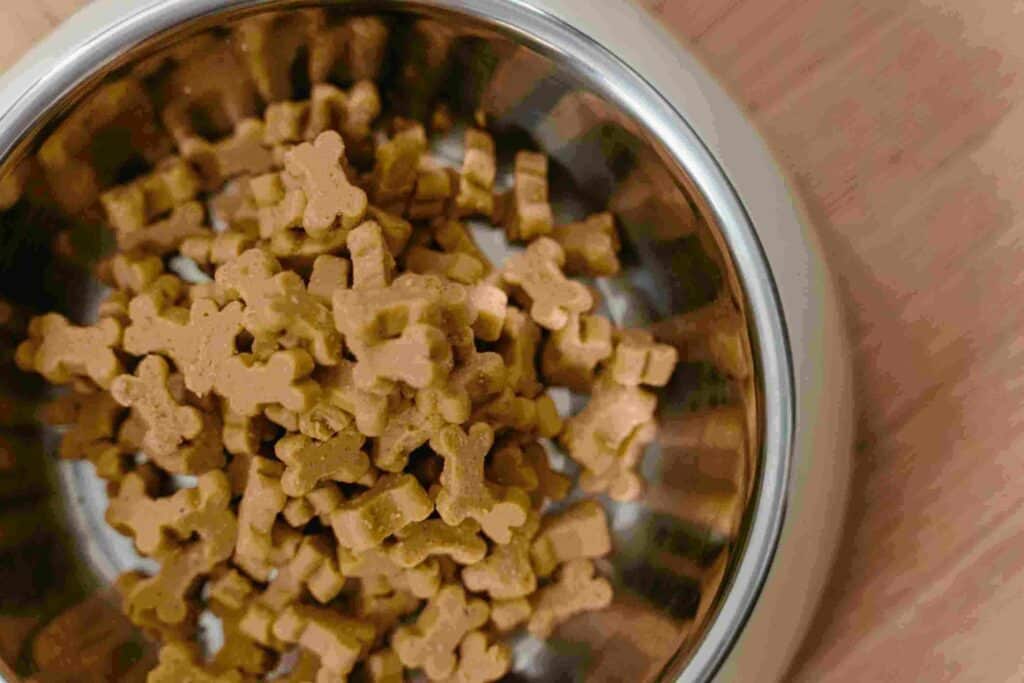
Grain-free dog food has become increasingly popular among pet owners and veterinarians alike, promising improved digestion, better skin and coat health, and relief from allergies and sensitivities. But what exactly are the benefits — and where should you be cautious? This article dives into the nutritional benefits of grain-free diets for dogs as the main choice of pet food, what science supports, and key considerations to ensure a healthy, balanced diet for your canine companion.
What Does “Grain-Free” Mean?
A grain-free dog food sometimes called protein-rich ancestral diet removes or avoids common cereal grains such as wheat, corn, rice, barley, oats, and sometimes millet. Instead, carbohydrate sources may include:
- Root vegetables (e.g. sweet potato, potato)
- Legumes (peas, lentils, chickpeas)
- Other non‐grain plants such as Brown Rice.
These foods are often formulated to meet the same nutritional standards (such as those of AAFCO in the U.S.) for protein, fats, vitamins, minerals, and amino acids.
Key Nutritional Benefits
Here are the primary benefits that grain-free dry dog food can offer — especially for certain dogs with specific dietary needs.
1. Easier Digestion for Sensitive Dogs
Some dogs have difficulty digesting certain grains, which may lead to symptoms such as bloating, gas, loose stools, or irregular bowel movements. Grain-free formulas tend to use ingredients that are often easier to digest for sensitive stomachs.
By choosing well-formulated grain-free foods, pet parent may see improvements in stool consistency and reduced gastrointestinal discomfort.
2. Reduced Risk of Allergic Reactions or Food Sensitivities
While true grain allergies are relatively rare in dogs, some animals do show sensitivities or intolerances to particular grains (e.g. wheat or corn) or to gluten. Removing grains can reduce exposure to potential allergens.
Additionally, grain-free diets dry food can be part of a limited ingredient or elimination diet used to identify and manage food sensitivities.
3. Higher Quality Protein and Nutrient Density
Because grains are often cheaper fillers, grain-free foods often emphasize higher percentages of animal protein and richer sources of essential fatty acids, vitamins, and minerals. This can lead to a better “nutrient per calorie” ratio.
Higher-quality meats or fish used in grain-free formulas also contribute to muscle maintenance, growth (for puppies), and overall health.
4. Improved Skin, Coat, and Overall Appearance
Good skin and coat health are often among the first visible improvements pet owners notice after switching to a higher quality, grain-free diet. The combination of better protein sources and more balanced essential fatty acids (omega-3, omega-6) can help reduce dryness, itching, and dullness of coat.
5. Better Energy Stability & Possibly Weight Management
Grain-free foods often rely on slower digesting carbohydrates (from roots, legumes) which may provide a more steady release of energy vs. high glycemic grain carbohydrates. This can help avoid energy “spikes and crashes” in active dogs.
Also, with higher protein and fewer empty calories, grain-free formulas may help in maintaining lean muscle and controlling body fat, which is especially helpful in overweight or less active dogs.
Scientific & Health Considerations: What to Be Mindful Of
While there are benefits, there are also important risks or things to watch out for with grain-free diets. Ensuring the diet is truly balanced and appropriate for your dog is essential.
1. Dilated Cardiomyopathy (DCM) Concern
One of the biggest concerns raised in recent years is a possible link between certain grain-free diets (particularly those high in legumes, pulses like peas/lentils, or potatoes) and cases of diet-associated dilated cardiomyopathy (DCM), a serious heart condition.
Veterinary authorities have noted that some dogs on grain-free diets developed low taurine levels, or other changes that may predispose to DCM. However, the science is not fully settled, and not all grain-free foods are implicated.
2. Nutritional Imbalance Risks
- Sometimes replacing grains with legumes or roots can alter nutrient profiles (e.g. different amino acid balance, fiber content).
- Missing or low amounts of certain vitamins or minerals that grains help supply (or are easier to include via grain sources).
- Over-reliance on certain ingredients can lead to over- or under-supplementation.
3. Cost and Availability
Higher-end ingredients, more rigorous formulation, and less bulk filler generally mean grain-free formulas are more expensive. They may also be harder to find in some areas or may need importing.
4. Misleading Labeling and Marketing
“Grain-free” doesn’t always mean “better” for every dog. Some foods marketed as grain-free may still use high levels of plant proteins or pulses that can trigger sensitivities or affect nutrient absorption. Always check:
- Whether the food is labeled “complete and balanced” by a recognized nutritional authority (AAFCO Dog Food Nutrient Profiles or similar)
- Ingredient quality
- Supplementation (e.g. taurine if needed)
- Whether the brand has veterinary nutritionist oversight
Which Dogs May Benefit Most from Grain-Free Diets
Not every dog needs a grain-free diet. But in certain cases, the benefits tend to outweigh the risks. These dogs might include:
- Dogs with diagnosed grain allergies or intolerances
- Dogs with chronic digestive upsets that haven’t responded to grain-inclusive diets
- Dogs with sensitive skin, itchiness, or coat issues possibly linked to diet
- Highly active dogs that require high protein, nutrient-dense food
- Puppies of certain breeds, but only if the grain-free formula is specifically developed for growth
How to Make the Switch Safely
If you’re considering moving your dog to a grain-free diet, here are steps to make the transition wisely:
- Consult with your veterinarian, especially for dogs with pre-existing health conditions (heart, kidney, etc.).
- Ensure the grain-free food is complete and balanced. Check labels for AAFCO (or your country’s equivalent) approval.
- Transition gradually over 7-10 days: start mixing a small proportion of the new food with the old, slowly increasing. This helps avoid digestive upset.
- Monitor key indicators: energy levels, stool quality, skin & coat condition, possibly lab work (e.g., for taurine in predisposed breeds).
- Avoid over-feeding: grain-free doesn’t always mean lower calorie. Adjust portions as needed.
Conclusion
When it comes to animal nutrition, many pet owners are turning to gluten-free dog food and grain-free ocean recipes that focus on balanced formulas with high quality proteins. Premium options often highlight deboned chicken as a first-five kibble ingredient, paired with freeze-dried pieces or even raw meat for added freshness and taste. To further support heart and muscle health, some brands include special amino acid supplementation, ensuring dogs receive the full spectrum of nutrients they need. By choosing carefully crafted diets, pet parents can provide optimal nourishment while avoiding unnecessary fillers.
Grain-free dog food can offer real nutritional benefits — particularly for dogs with grain sensitivities, digestive issues, or specific needs. Improved digestion, better skin and coat health, higher protein content, and more steady energy are among the positives backed by research. However, grain-free is not a one-size-fits-all solution. Risks like DCM, nutritional imbalance, and higher cost mean owners need to research carefully and consult with their vet. Also check our article about Wet Food and it’s benefits or dog food topper.
If done thoughtfully — with high-quality ingredients, proper formulation, and monitoring — grain-free diets can be a valid and beneficial choice for many dogs.
